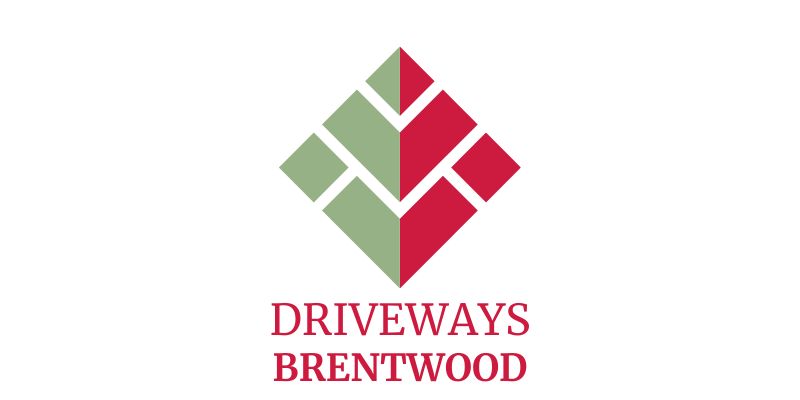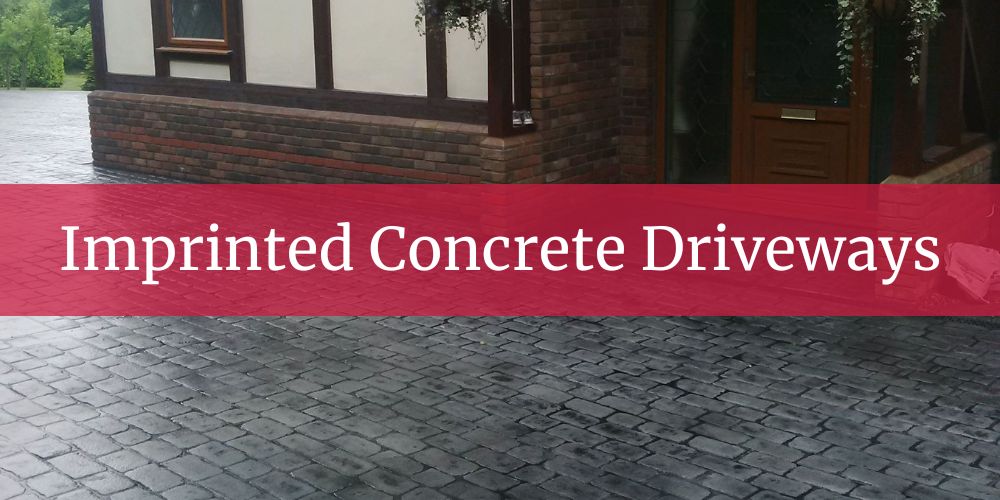Driveways Brentwood installs pattern-imprinted concrete driveways across Brentwood, Shenfield, Hutton, Warley and nearby villages. Each driveway is engineered on a correctly compacted MOT Type 1 base with laser-set levels, planned drainage and neat threshold channels. You can choose realistic stone, slate, cobble or brick patterns with colour finishes sealed in matte or satin, plus optional anti-slip for main walk routes. Driveways Brentwood handle survey, design, groundworks, reinforcement, stamping and sealing so you get a weed-free, low-joint surface that lifts kerb appeal; book a free site survey and fixed quote in Brentwood today.
Imprinted concrete is a single poured concrete slab that is stamped with textured mats to recreate stone, slate, cobble or brick. The slab is typically 100 to 125 mm thick, reinforced with mesh or macro-fibres, set to positive falls and fitted with threshold channels, then saw-cut with control joints aligned to the pattern so shrinkage is managed without spoiling the look. Colour can be integral or applied as a dry-shake hardener with antique release for depth, and the surface is finished with a UV-stable sealer with an optional anti-slip additive where needed. Because it is non-permeable, drainage is designed into the build, and with simple washing plus resealing every three to five years the finish remains strong, weed-free and ready for daily parking.
What Is An Imprinted Concrete Driveway?
An imprinted concrete driveway is a single poured concrete slab that is textured with stamping mats to recreate the look of stone, slate, cobble or brick. The result is a continuous surface with very few joints, strong load capacity and a crisp, decorative finish that resists weed growth. Colours are created with integral pigments or dry-shake hardeners, then enhanced with a release agent to give realistic shading before the pattern is pressed in. Once cured, the driveway is sealed to lock in colour, resist staining and improve durability. In Brentwood, installations are designed for London Clay. The slab is typically 100 to 125 mm thick over a compacted MOT Type 1 foundation, often with a separation geotextile where ground is soft or made up. We specify steel mesh or macro-fibre reinforcement according to duty, set laser-checked falls to move water away from façades, and include threshold channels with silt traps where needed. Clearances to the damp proof course, neat tie-ins at pavements and garage slabs, and robust edge detailing keep the surface stable under commuter turning and daily parking.
The installation process is carefully sequenced. After placing and finishing the concrete, colour hardener or integral colour is applied, a release is dusted on, and textured mats are pressed to create the chosen pattern. Control joints are saw cut within 24 to 48 hours and aligned to faux grout lines or border bands so shrinkage is managed without spoiling the design, while expansion joints are formed at abutments such as walls and garage slabs. A UV-stable sealer in matte or satin is applied, and an anti-slip additive can be included on main walk routes and slopes for confident wet footing. Because imprinted concrete is not permeable, drainage is designed into the build from the start. Positive falls direct runoff to linear channels, gullies or a soakaway that is sized to BRE guidance, and where planning thresholds apply for front gardens over 5 m² we will advise on compliance. Day to day care is straightforward. Periodic washing, prompt cleanup of oil or leaf tannins and resealing every three to five years keep colour rich and protection intact. If damage occurs, local patching, recolouring and a fresh seal can restore a uniform appearance, delivering a long-lasting, weed-free driveway with strong kerb appeal for Brentwood homes.
Have a question about an upcoming project?
Why Should You Use Imprinted Concrete For Your Driveway In The Brentwood Area?
Imprinted concrete suits Brentwood because a single reinforced slab handles the shrink and swell of London Clay and the tight turning that comes with commuter parking. The monolithic build has very few joints, so weeds struggle to take hold and edges stay stable at entrances and bays. When we set proper sub-bases, reinforcement, and control joints, the surface resists scuffing and rutting even on slopes around Shenfield and Hutton. You get the strength of concrete with the look of stone, slate, cobble, or brick. It is also a highly designable system. Colour hardeners and antique release create natural tonal depth, and patterns can be aligned to doors, steps, and boundaries for calm sightlines. Borders and bands frame parking areas, while recessed covers are set flush and in pattern so services almost disappear. Thresholds and tie-ins to pavements and garage slabs are finished neatly for a seamless look.
Because imprinted concrete is not permeable, drainage is engineered in from the start. We set positive falls with laser levels, add threshold channels with silt traps, and size a soakaway to BRE guidance where suitable, which keeps façades dry on clay-heavy plots. Day to day upkeep is simple. Periodic washing and resealing every 3 to 5 years maintains colour, protects against staining, and optional anti-slip additive helps on main walk routes and steps.
- Monolithic strength which copes with London Clay and frequent turning
- Low-joint, weed-resistant surface with realistic stone, slate, cobble, or brick looks
- Premium detailing with aligned patterns, crisp borders, and recessed covers set flush
- Drainage designed in for clay sites, including falls, channels, and soakaway where appropriate
- Straightforward maintenance with periodic reseal for long service life
1. Monolithic strength which copes with London Clay and frequent turning
A pattern-imprinted concrete driveway is a single reinforced slab that tolerates the shrink–swell behaviour of London Clay far better than many layered systems. For Brentwood plots we typically pour 100 to 125 mm of structural concrete over 150 to 200 mm of compacted MOT Type 1, using a separation geotextile where soils are soft or made ground. Welded mesh or macro-synthetic fibres are specified to suit duty, with correct cover and chairs so reinforcement sits where it should and resists scuffing and rutting from tight commuter turning in areas like Shenfield and Hutton. Sub-base is compacted in thin lifts, levels are set with lasers and edges are shuttered to prevent breakout at margins. Curing is controlled with membranes or early sealers, trafficking is staged (foot access first, vehicles after the agreed cure period), and the result is a slab that feels solid from day one and stays level through Brentwood’s seasonal cycles.
2. Low-joint, weed-resistant surface with realistic stone, slate, cobble, or brick looks
Imprinted concrete is stamped with textured mats to recreate stone, slate, cobble or brick while keeping the slab largely continuous, which removes most of the joints that attract weeds and trap dirt. Colour can be introduced with integral pigment or with dry-shake hardener that also improves surface wear resistance, then a release agent creates natural shadowing before the pattern is pressed. Control joints are saw-cut within 24 to 48 hours to around one quarter of slab depth, aligned to faux grout lines or border bands so shrinkage is managed without spoiling the design, and expansion joints are formed at abutments such as garage slabs and walls. After wash-off, a UV-stable sealer in matte or satin locks in colour, resists staining and can include an anti-slip additive for steps and the main walk route. The finished surface delivers the strength of concrete with the look of premium masonry that suits period homes in South Weald as well as modern plots in Warley and Ingatestone.
3. Premium detailing with aligned patterns, crisp borders, and recessed covers set flush
We plan the pattern layout to your architecture so bond lines run true to door thresholds, steps, garages and boundary walls, which gives calm sightlines and avoids thin slivers at edges. Borders and bands are set out first, then fields are aligned to them so the pattern reads intentionally across parking bays and turning areas; corner mitres are cut tight and radii are templated for clean curves. Recessed inspection covers are installed level, packed and finished in-pattern using the same colour system so frames virtually disappear while remaining fully serviceable; we specify covers to the correct load class for vehicles. Thresholds are detailed to protect the damp-proof course while providing smooth access, kerb lines are kept plumb and true, and tie-ins to pavements and garage slabs are hot-sealed and colour-matched. Where lighting or EV provision is planned, we place concealed ducts before the pour so the surface remains uncluttered and future upgrades are simple.
4. Drainage designed in for clay sites, including falls, channels, and soakaway where appropriate
Because imprinted concrete itself is not permeable, we engineer drainage from the outset for Brentwood’s clay ground. Falls are set with laser levels, typically around 1:60 to 1:80, with both longitudinal falls and subtle crossfalls as required to prevent ponding at bays and in front of doors. At thresholds we install linear channels with silt traps and rodding access, selected to the right load class and grille style, then connect to a soakaway sized to BRE guidance where infiltration testing supports it; siting avoids services and respects garden layouts. If infiltration is poor, we design positive outfalls to approved drainage points subject to permissions, or incorporate attenuation volumes within the sub-base to slow discharge. Throughout, we maintain clearances to the damp-proof course, form drip details at façades to reduce splashback, and set inspection points so maintenance stays quick and predictable.
5. Straightforward maintenance with periodic reseal for long service life
Day-to-day care is simple: occasional rinsing, gentle washing with a pH-neutral cleaner, and prompt treatment of oil or leaf tannin marks keep the surface looking fresh. Control joints are saw-cut, cleaned and sealed so shrinkage is managed without disturbing the pattern, and we check channels and silt traps periodically to keep flow rates up. On completion we apply a UV-stable sealer; future reseals every three to five years, timed to exposure and traffic, restore colour depth and protection—surface must be clean, dry and within the correct temperature window, and the new sealer must be compatible with the original. For winter, avoid aggressive de-icing salts during the first season and use sand or grit instead; use rubber-edged shovels to protect the surface. If local scuffs or stains occur, targeted recolouring and a fresh seal can blend repairs so the driveway returns to a uniform, high-quality finish.

